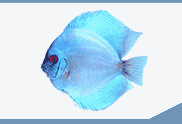

 |
||||||||||||
 |
||||||||||||
| The Use of Salt in Aquaculture | ||||||
| Ruth Francis-Floyd | ||||||
Salt, also known as sodium chloride or NaCl, has many potential applications in fish production. It effectively controls some parasites, minimizes osmoregulatory stress during transport, and prevents methemoglobinemia (brown blood disease) in channel catfish. While the Food and Drug Administration (FDA) has not approved the use of salt in aquatic animals, FDA considers the use of salt in aquaculture to be of low regulatory priority. The agency does not regulate the use of salt to control salinity. WHAT IS SALT? Salt is the generic term applied to the ionic or mineral component of water. All water except distilled or deionized water contains some salt. Minerals found in water have many important physiologic functions in fish. For this reason, fish should never be placed in 100 percent distilled or deionized water. Although seawater is composed of many different salts, sodium chloride is the predominant one. Marine animals must be maintained in a saltwater solution that contains the micronutrients found in natural seawater. A number of products containing these nutrients are commercially available. Since the micronutrients present in sea salt are not critical for the survival of freshwater fish, either noniodized table salt or rock salt (suitable for consumption by humans or livestock) may be used for salt "treatments" in these species. SALT CONCENTRATION The effects of salt on fish are determined both by salt concentration and duration of exposure. Seawater contains 3 percent salt by weight; this is equivalent to 30 parts per thousand (ppt) or 30,000 parts per million (ppm). Some parasitic infestations of freshwater fish may be effectively eliminated by dipping fish in a seawater solution for 30 seconds to 10 minutes, depending on the species. Weaker solutions containing 0.5 to 1.0 percent salt may be used as a bath for several hours to eliminate some freshwater parasites. Concentrations of 0.1 to 0.3 percent may be used to enhance mucus production and osmoregulation in freshwater fish during handling and transport. Very weak salt treatments, measured in ppm, may be used to control methemoglobinemia in some freshwater fish species. more ... |
 |
|||||
| About Us :: Message Board :: Chat | |||||
| Library :: Photo Gallery :: Links & Resources :: Breeders & Sponsors :: Merchandise | |||||
| Website designed by: EthanCote.com | © 2001-2004, SimplyDiscus.com. All Rights Reserved. | ||||